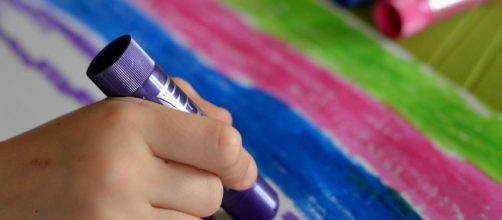Therapy can be Challenging for children and therapists since children may not be able to articulate clearly what their feelings, experiences etc are. This can impact how the therapist treats the child. Art Therapy is an active and creative process which is guided by the theory and facilitated by a trained practitioner.
An alternative to traditional therapy
Art therapy is an alternative to traditional therapy, especially for children. This form of therapy allows a free flow of expression both verbal and non-verbal, which allows the child the opportunity to express their feelings, experiences, and challenges.
They are in a safe environment, engaging in activities they can control. They are not exposed to the probing and often frightening question answer session of traditional therapy. At times, some children may find this experienced intimidating and become scared, this limiting their willingness to share their experiences. A trained professional can use the art as an instrument, which can be used as a cue for verbal communication with the child. It involves physical movement, creative opportunities for the child to engage their senses and express themselves.
This therapy instrument can be useful in building self-esteem, assisting with decreasing stress, can be used to resolve conflict and pain, used to improve cognitive functioning as well as sensory – motor functions and assist in developing emotive resilience.
Art therapy can also be used for insight into things we may not be consciously aware of. It can be used to promote growth in the individual.
Some benefits of art therapy for a child
Creating art, for example, drawing and painting can improve the mood of the child. It is a fun and exciting activity that children will enjoy. It can encourage the development of hand to eye coordination and motor skills. This provides the forums for the child to use self-expression, their feelings or emotions in creating projects. It can assist them in developing insight into how they feel and help the counselor to direct them to healthy life changes.
It can make the therapy process less intimidating and scary for the child.
There is less stress and less tension, and it is more likely that the child will be comfortable to share or at least be more open to sharing.
Art therapy gives the child a level of control they may lack in their life, developing independence, self- dependence, and self – adequacy. It will allow them to identify and work through the issues and experiences they may have in a controlled and safe environment.
It can bring to the fore experiences, symbols, concerns which may not be consciously known to the client. It may be able to assist the child in identifying information like dates and people who may have to cause them harm.
The child can communicate to those who can render assistance non-verbally which they may have challenges expressing or being unable to others.
The creation of the story or sequence of events can be expressed. The therapy can be a medium for self-evaluation through self-observation of creations. It gives the child a coping mechanism they can actually use in their everyday life. It is a useful problem-solving tool that children can use.
Art therapy is useful when treating health challenges, trauma or disorders e.g. depression, abuse, relationship concerns, addictions, mental and emotional challenges, anxiety, fear, loss etc. It is in no way a cure but a tool used in the therapy process to help the client identify and deal with their concerns. They may create the pieces but refuse to discuss or clarify what it means to them. They can refuse to create or engage in the activities. Even a child who is resistant to therapy cannot be forced. As with any theory process, it takes time and is reliant on the patient's efforts, desires, needs and motivation to gain assistance.


